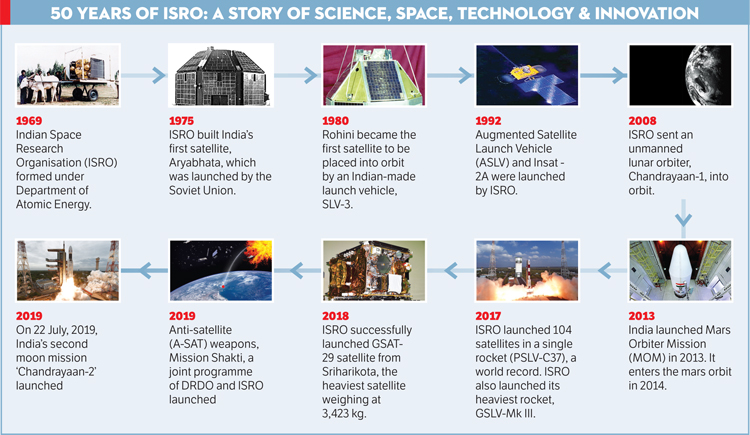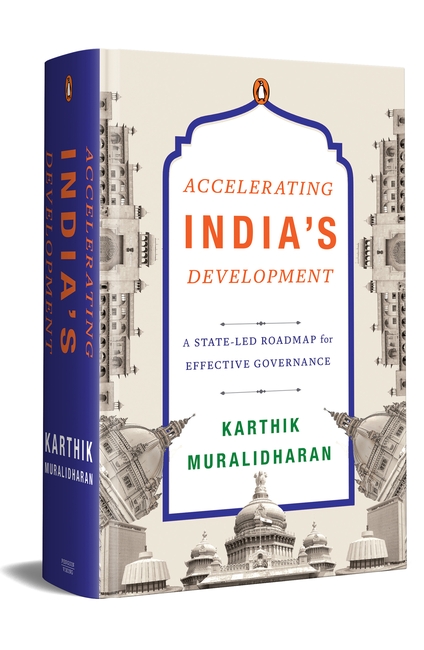India's Ambitious Plan for Space Exploration In a groundbreaking announcement, Dr. Jitendra Singh, the Union Minister of State for Space, revealed an audacious plan that is set to take India's space exploration journey to new heights. The ambitious project aims to make history by having an Indian declare "Viksit Bharat 2047" from the surface of the Moon, marking a significant milestone in the country's space exploration journey. Viksit Bharat 2047, which translates to "Developed India 2047," is a vision for India's centennial year, aiming to propel the nation towards rapid growth and development. The declaration from the Moon's surface will symbolize India's commitment to becoming a major player in the global space arena. This monumental achievement will be a testament to India's rapid progress in space technology and exploration. The Indian Space Research Organisation (ISRO) has been making strides in recent years, with notable accomplishments such as the successful launch of the Chandrayaan-1 lunar mission in 2008 and the Mangalyaan Mars orbiter mission in 2014. The plan to declare "Viksit Bharat 2047" from the Moon's surface is a culmination of India's efforts to:
- Enhance its space capabilities and infrastructure
- Develop cutting-edge technologies for space exploration
- Foster international collaborations and cooperation in space research
- Inspire future generations to pursue careers in science, technology, engineering, and mathematics (STEM)

The Vision Behind 'Viksit Bharat 2047'
- Universal Access to Quality Education: Ensuring that every citizen has access to quality education, regardless of their socio-economic background or geographical location.
- Healthcare for All: Providing universal access to quality healthcare, leveraging cutting-edge medical technologies and innovative healthcare models.
- Infrastructure Development: Building world-class infrastructure, including smart cities, high-speed transportation systems, and state-of-the-art communication networks.
- Sustainable Development: Fostering sustainable development, driven by renewable energy sources, eco-friendly technologies, and environmentally conscious practices.
- Inclusive Growth: Ensuring that the benefits of growth and development are equitably distributed, with a focus on empowering marginalized communities and promoting social justice.

India's Space Exploration Journey So Far
- Developing indigenous launch vehicles, such as the Polar Satellite Launch Vehicle (PSLV) and the Geosynchronous Satellite Launch Vehicle (GSLV)
- Launching a record number of satellites in a single mission, with the PSLV-C37 launch in 2017
- Developing advanced satellite technology, including navigation, communication, and earth observation satellites
- Collaborating with international space agencies, such as NASA and the European Space Agency (ESA), on joint missions and projects

The Impact of 'Viksit Bharat 2047' on the Global Stage
- Knowledge sharing and technology transfer in areas like renewable energy, healthcare, and education
- Joint research initiatives in emerging fields like artificial intelligence, biotechnology, and nanotechnology
- Increased foreign direct investment (FDI) in key sectors, driving economic growth and job creation
- Enhanced people-to-people connections, fostering greater cultural understanding and exchange
- Increased participation in global forums like the G20, BRICS, and the United Nations, where India will play a more influential role in shaping global agendas
- Greater recognition of India's soft power, with its cultural, educational, and scientific achievements gaining international acclaim
- Enhanced diplomatic relations, with India emerging as a key partner for countries seeking to engage with a rising global power
- A potential permanent seat for India in the United Nations Security Council, reflecting its growing influence in global affairs

The Roadmap to Achieving 'Viksit Bharat 2047'
- Improving the quality of education, with a focus on skills development and vocational training.
- Enhancing healthcare infrastructure and services, with an emphasis on preventive care and wellness.
- Investing in rural development, including infrastructure, sanitation, and digital connectivity.
- Digitalization**: Leveraging technologies like artificial intelligence, blockchain, and the Internet of Things (IoT) to enhance governance, improve efficiency, and reduce corruption.
- Broadband for All**: Ensuring universal access to high-speed internet, bridging the digital divide, and promoting digital literacy.
- FinTech and Digital Payments**: Encouraging the adoption of digital payment systems, promoting financial inclusion, and reducing cash transactions.
- Establishing innovation hubs and incubators, focusing on areas like clean energy, biotechnology, and advanced manufacturing.
- Encouraging public-private partnerships, collaborations, and knowledge sharing between academia, industry, and government.
- Investing in research and development, with a focus on solving India's unique challenges and developing indigenous solutions.
- Infrastructure Development**: Upgrading and expanding transportation networks, including roads, railways, airports, and seaports.
- Investment in Manufacturing**: Encouraging investments in manufacturing, particularly in areas like electronics, pharmaceuticals, and automotive.
- Foreign Direct Investment (FDI)**: Attracting FDI, promoting ease of doing business, and creating a business-friendly environment.
- Streamlining bureaucracy, reducing red tape, and promoting transparency and accountability.
- Encouraging citizen participation, leveraging technology for feedback and grievance redressal.
- Establishing a robust monitoring and evaluation framework, with clear key performance indicators (KPIs) and targets.

Frequently Asked Questions (FAQ)
What is the significance of announcing 'Viksit Bharat 2047' from the Moon's surface?
A Giant Leap for India: Significance of Announcing "Viksit Bharat 2047" from the Moon's Surface In a historic move, India is set to make a groundbreaking announcement from the Moon's surface, proclaiming "Viksit Bharat 2047" – a vision for a developed India by 2047. This unprecedented declaration holds immense significance, not only for India but also for the global community. It symbolizes India's arrival on the global stage, demonstrating its capabilities in space exploration and cementing its position as a major player in the international arena. Demonstrating Capabilities in Space Exploration By making this announcement from the Moon's surface, India showcases its remarkable achievements in space technology and exploration. This feat is a testament to the country's investments in its space program, which have yielded impressive results in recent years. The successful launch of the Chandrayaan-1 mission in 2008, followed by the Mangalyaan mission to Mars in 2013, has demonstrated India's capabilities in designing, launching, and operating complex space missions. Global Recognition and Diplomacy The announcement of "Viksit Bharat 2047" from the Moon's surface sends a strong message to the global community about India's aspirations and capabilities. It is an opportunity for India to showcase its scientific prowess, technological advancements, and commitment to innovation. This historic event is likely to generate significant international attention, fostering global recognition and respect for India's achievements. Inspiring Future Generations The announcement of "Viksit Bharat 2047" from the Moon's surface is also expected to have a profound impact on the younger generation in India. It will inspire them to pursue careers in science, technology, engineering, and mathematics (STEM), driving innovation and progress in various fields. This event will also promote a sense of national pride, motivating Indians to work towards achieving the vision of a developed India by 2047. Key Takeaways
- Announcing "Viksit Bharat 2047" from the Moon's surface marks a significant milestone in India's space exploration journey.
- It demonstrates India's capabilities in designing, launching, and operating complex space missions.
- The event is expected to generate global recognition and respect for India's achievements.
- It will inspire future generations to pursue careers in STEM fields, driving innovation and progress.
- The announcement will promote national pride, motivating Indians to work towards achieving the vision of a developed India by 2047.
How will 'Viksit Bharat 2047' benefit India and the world?
As India embarks on its journey to become a developed nation by 2047, the concept of "Viksit Bharat" or "Developed India" has taken center stage. This vision is not only transformative for India but also has far-reaching implications for the world at large. In this article, we'll delve into the ways in which Viksit Bharat 2047 will benefit both India and the global community. Driving Innovation Viksit Bharat 2047 is built on the foundation of innovation and technological advancements. As India strives to become a developed nation, it will invest heavily in research and development, leading to breakthroughs in various fields such as renewable energy, artificial intelligence, and biotechnology. This will not only enhance India's competitiveness in the global market but also contribute to the betterment of humanity as a whole. For instance, innovations in renewable energy will help combat climate change, a pressing global concern. Economic Growth and Prosperity A developed India will be a significant contributor to global economic growth. With a projected GDP of over $10 trillion, India will become a major driver of economic activity, creating new opportunities for trade, investment, and job creation. This, in turn, will lead to increased prosperity not only for Indians but also for people around the world. As India's economy grows, it will become a significant market for goods and services, benefiting industries globally. Global Recognition and Leadership As India achieves developed nation status, it will earn global recognition and respect. This will translate into increased influence on the world stage, enabling India to play a more significant role in shaping global policies and agendas. With its growing economic and technological prowess, India will be well-positioned to provide leadership on critical global issues such as climate change, sustainable development, and global governance. Benefits for the World The benefits of Viksit Bharat 2047 will extend far beyond India's borders. Some of the key advantages for the world include:
- Climate Change Mitigation**: India's focus on renewable energy and sustainable development will contribute significantly to reducing global carbon emissions, helping to combat climate change.
- Global Economic Growth**: India's growing economy will create new opportunities for trade, investment, and job creation, driving global economic growth and prosperity.
- Innovative Solutions**: India's investments in research and development will lead to breakthroughs in various fields, providing innovative solutions to global challenges.
- Global Governance**: India's increased influence on the world stage will enable it to play a more significant role in shaping global policies and agendas, promoting global governance and cooperation.
Is India capable of achieving this ambitious vision by 2047?
As India celebrates its 75th year of independence, the nation has set its sights on an ambitious vision for the future – Viksit Bharat 2047. This vision envisions a developed, self-reliant, and technologically advanced India, poised to take its rightful place among the global leaders. But the question remains, is India capable of achieving this ambitious vision by 2047? India's growing space program is one of the key indicators of its potential to achieve this vision. In recent years, the Indian Space Research Organisation (ISRO) has made tremendous strides in space exploration, launching a record number of satellites into orbit and successfully landing on the moon. The success of ISRO's Mangalyaan mission to Mars has demonstrated India's capabilities in interplanetary exploration. With its sights set on the moon and beyond, India's space program is poised to play a significant role in achieving the nation's vision for 2047. Another critical factor in India's favor is its rapid technological advancements. The nation has made significant progress in emerging technologies such as artificial intelligence, blockchain, and the Internet of Things (IoT). Indian startups and entrepreneurs are leveraging these technologies to develop innovative solutions that are transforming industries and improving lives. The government's initiatives such as Digital India and Make in India have created a conducive ecosystem for innovation and entrepreneurship to thrive. Investment in innovation is another key driver of India's growth and development. The government has established various initiatives to promote innovation, such as the Atal Innovation Mission, which aims to create a culture of innovation and entrepreneurship in the country. Additionally, India has seen a significant increase in investments in research and development, with both the government and private sector investing heavily in R&D initiatives. This investment in innovation is critical to achieving the vision of Viksit Bharat 2047, as it will enable India to develop cutting-edge technologies and solutions that can drive growth and development. Some of the key areas where India is making significant progress include:
- Renewable Energy: India has set ambitious targets for renewable energy, aiming to generate 40% of its power from non-fossil fuels by 2030. The nation is making rapid progress in this area, with solar and wind power becoming increasingly cost-competitive with fossil fuels.
- Electric Vehicles: India is promoting the adoption of electric vehicles, with the government setting a target of 30% electric vehicle penetration by 2030. This will not only reduce the nation's dependence on fossil fuels but also help reduce greenhouse gas emissions.
- Healthcare: India is making significant progress in healthcare, with the government launching initiatives such as the Ayushman Bharat program, which aims to provide universal health coverage to all citizens.
- Education: India is also making significant progress in education, with the government launching initiatives such as the New Education Policy, which aims to transform the education sector and make it more inclusive and accessible.
Promoted
Massive ROI on Your Career: Resume Bundle for Only ₹99
A winning resume is worth thousands in salary. Our bundle of 4,400+ templates costs just ₹99. The ROI is massive.
🔥 Get Lifetime Access Now 🔥
